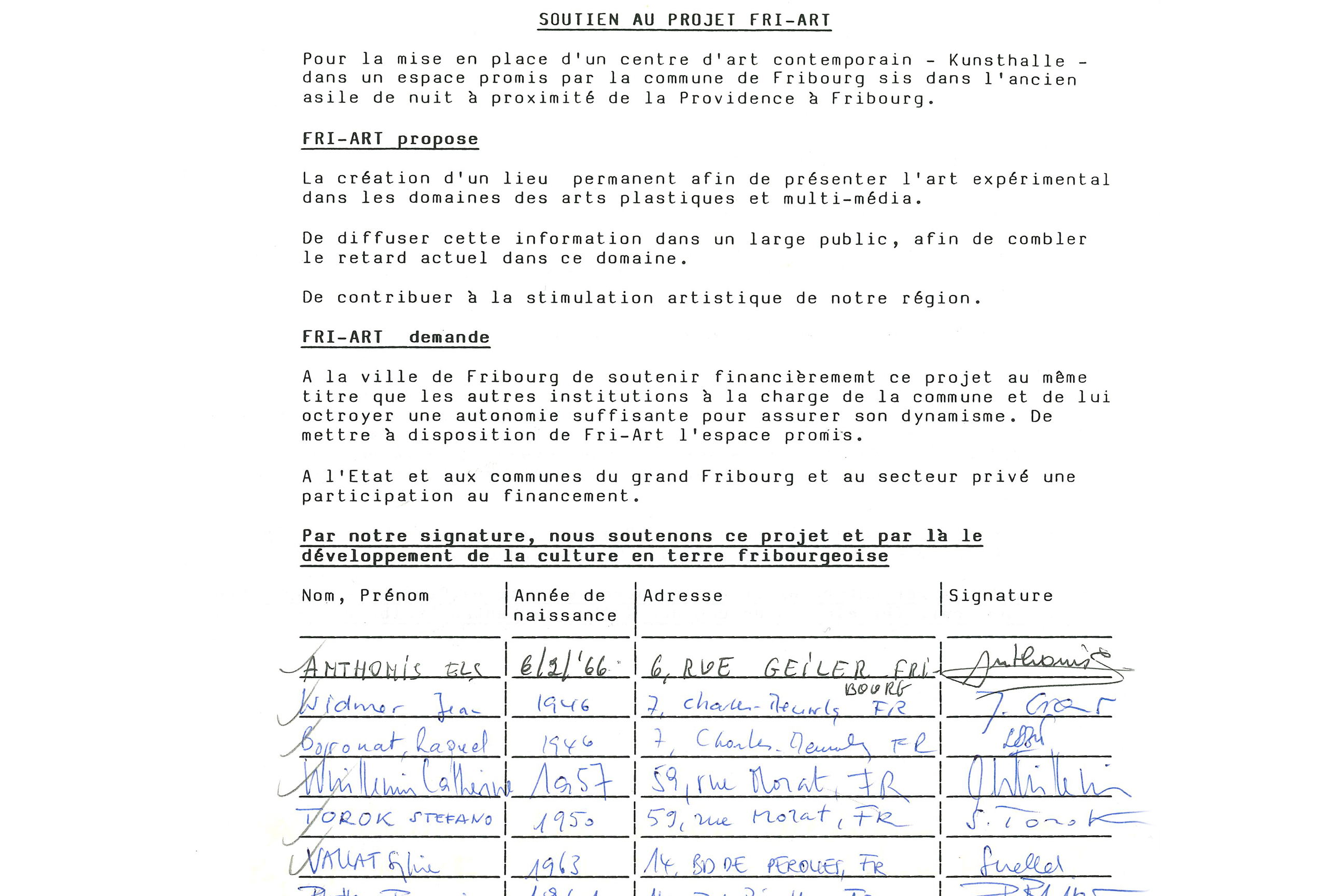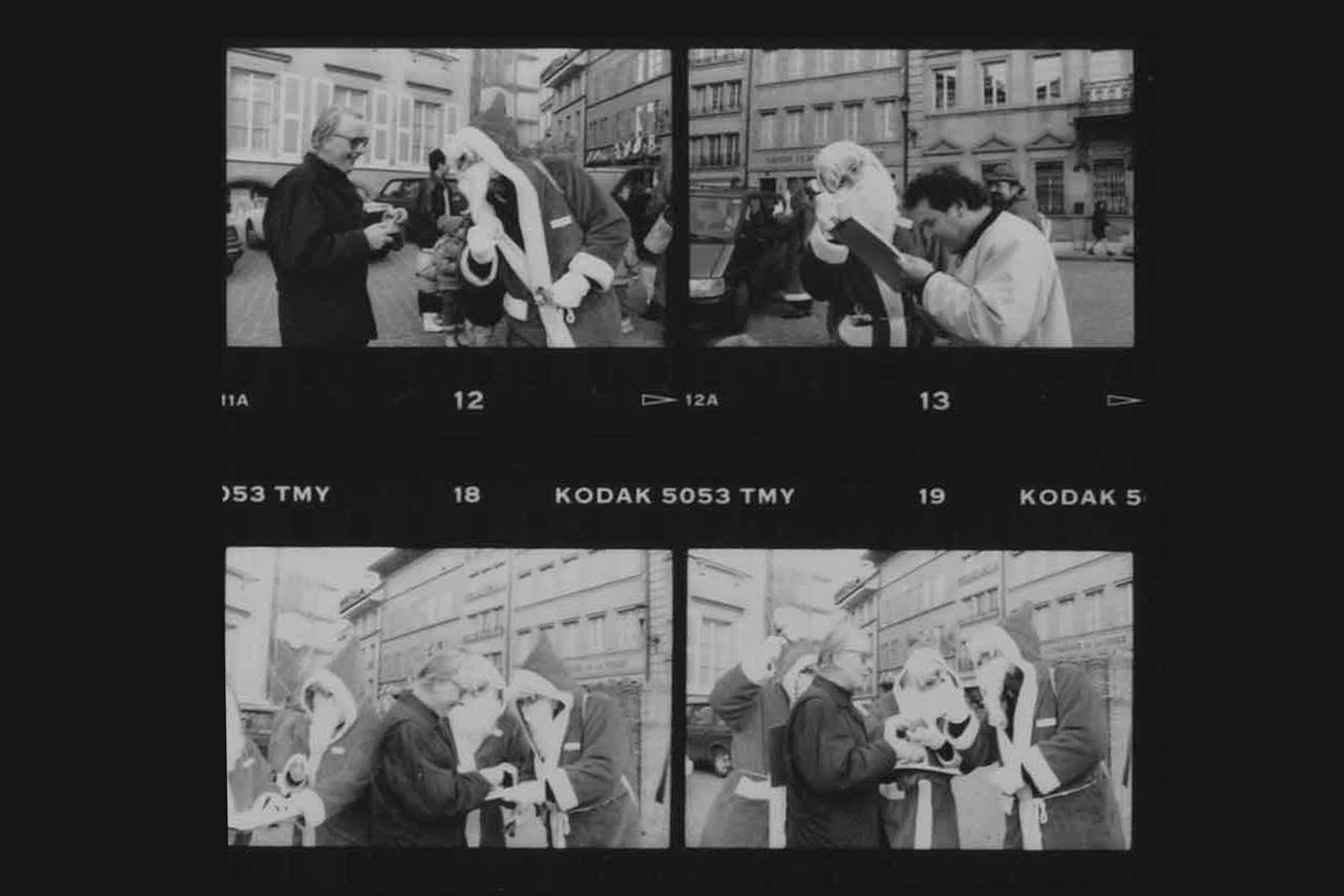1982–1990: The struggle to obtain a space

As of the 1980s, new forms of culture began to find homes in unused industrial buildings. These often unrenovated, modular spaces were ideal for contemporary art centres and museums. The town of Fribourg was no exception. In 1981, the Varis abattoirs were transformed to house the Fribourg Art and History Museum.
In 1982, the group that had grown up around Fri Art submitted a request to the Cultural Commission for a fixed site that would give the people of Fribourg access to contemporary artistic production on a permanent basis. Faced with the Cultural Commission’s silence, Fri Art continued to develop as an artistic entity, while regularly sending reminders regarding its project.
In 1986, Michel Ritter submitted an artistic project to the Fribourg Art and History Museum, proposing to transform the museum’s Gallery 3 into public toilets. The Museum refused to exhibit a work that “would shock visitors” and expose it to “possible attacks”. The reference to Marcel Duchamp’s Fountain was not without meaning. The proposition spoke ironically to the conservative, even sanitary, purity of museum spaces.
In this same letter in 1986, Ritter defended the project in the following words: “It is urgent that a space in Fribourg be opened led by those with an investigative spirit who are able to defend experimentation and spread knowledge of it to the wider public and above all the future generation.” In 1990, signatures were gathered on Saint-Nicolas, a symbolic date in Fribourg. The relationship between the local and the international and the concept of serving as a vehicle for information on the subject of contemporary art and its pertinence have been a constant in the institution’s rhetoric. Fri Art presented itself as “providing a collaborative space for Swiss and foreign artists” to mitigate the situation of the wider Fribourg public that was “poorly informed on the practice of current art “.

The laborious correspondence with the Cultural Commission went on from 1982 and 1990. Following the gathering of signatures, Fri Art finally obtained a permanent site. Previously a homeless shelter (1936 - 1990), the old cardboard factory (1896 - 1935) at Petites-Rames 22, would, as of winter 1990, house the activities of the Fribourg Art Centre. In 2021, Friart Kunsthalle celebrated its 30th anniversary in the building.
Text written in collaboration with Meagane Elsie Zurfluh, presented as part of the exhibition Friart est né du vide. L’esprit d’une Kunsthalle, MAHF Museoscope, 27.08 – 17.10.2021.
Translation: Jack Sims







